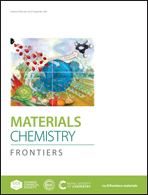A unified fluorescence quenching mechanism of tetrazine-based fluorogenic dyes: energy transfer to a dark state†
Abstract
Tetrazine-based fluorogenic probes are powerful tools for bioimaging, biosensing, and medical diagnostic applications. In these probes, the attachment of a tetrazine moiety generates a non-fluorescent precursor; upon the bio-orthogonal reaction of the tetrazine fragment, a strong fluorescence signal is released from the fluorophore, resulting in significant fluorescence turn-on responses. To rationally design tetrazine-based probes with enhanced turn-on ratios, one fundamental challenge is to understand their fluorescence quenching mechanism. Herein, utilizing quantum chemistry calculations, we investigated and described a generalized fluorescence quenching mechanism, coined as “energy transfer to a dark state” (ETDS). With the aid of the ETDS mechanism, we demonstrated how a large excited-state energy gap and a short distance between a tetrazine group and a fluorophore are essential for increasing the rate of energy transfer and improving turn-on ratios of tetrazine-based fluorophores. We further proposed two strategies in the rational design of highly desirable fluorogenic probes that exhibit longer emission wavelengths and higher turn-on ratios, including (1) shortening the fluorophore–tetrazine distance via “face-to-face” stacking; and (2) modulating the UV-vis absorption wavelengths. Our calculation results could provide invaluable insights into the rational design of a new generation of tetrazine-based fluorogenic probes.



 Please wait while we load your content...
Please wait while we load your content...